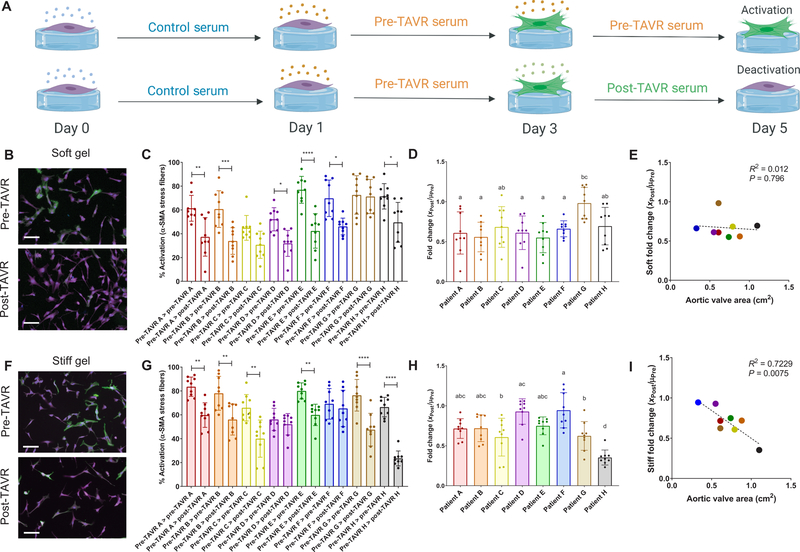Fig. 5. Post-TAVR serum deactivates valvular myofibroblasts activated with pre-TAVR serum on soft and stiff hydrogels.
(A) Schematic of myofibroblast deactivation experiments (created with BioRender). (B) Representative images and (C) percentage of activated porcine VICs on soft hydrogels treated initially with pre-TAVR serum and subsequently with either pre-TAVR or post-TAVR serum. (D) Fold change of VIC deactivation on soft hydrogels in post-TAVR serum (XPost values) normalized to the mean activation in pre-TAVR serum from the same patient (µPre). (E) Scatter plot of fold change in VIC deactivation on soft hydrogels versus aortic valve area measurements. (F) Representative images and (G) percentage of activated VICs on stiff hydrogels treated initially with pre-TAVR serum and subsequently with either pre-TAVR or post-TAVR serum. (H) Fold change of VIC deactivation on stiff hydrogels in post-TAVR serum (XPost values) normalized to the mean activation in pre-TAVR serum from the same patient (µPre). (I) Scatter plot of fold change in VIC deactivation on stiff hydrogels versus aortic valve area measurements. Stained images: green, α-SMA; magenta, cytoplasm; blue, nuclei. Scale bars, 100 µm. For all bar graphs, n = 9 measurements per group, means ± SD shown, and significance tested with one-way ANOVA for all data and indicated as *P < 0.05, **P < 0.01, ***P < 0.001, ****P < 0.0001, or groups with different letters indicate statistical significance (P < 0.05).

